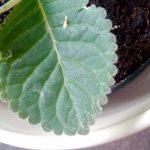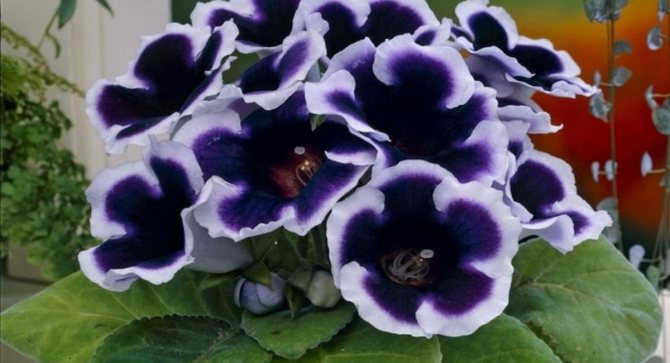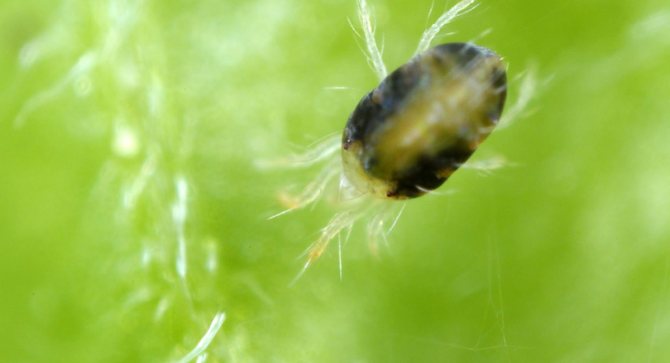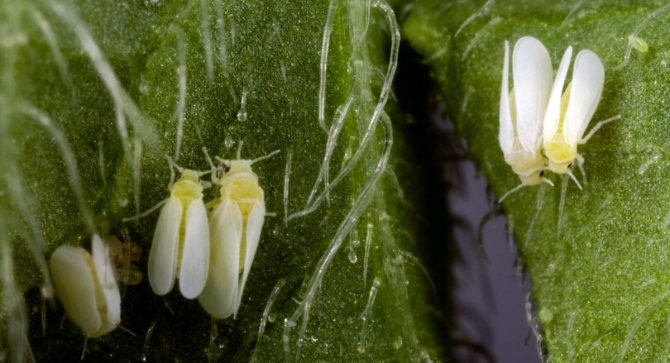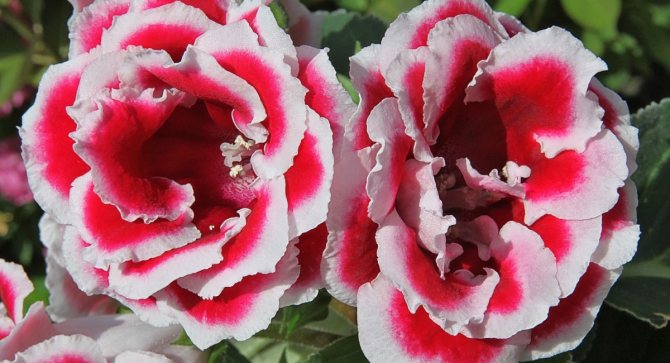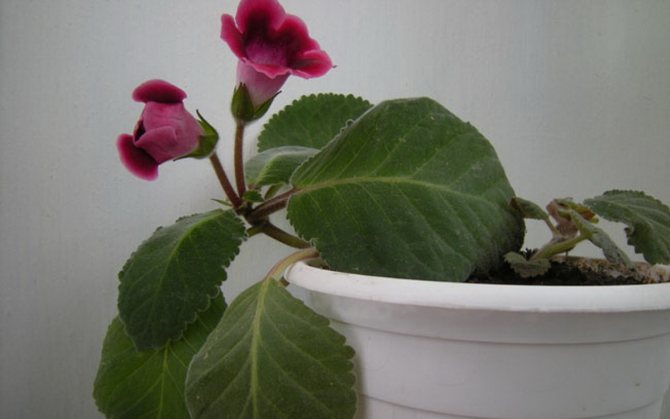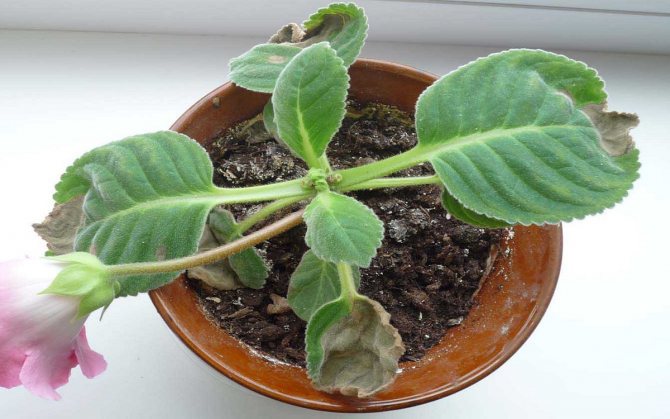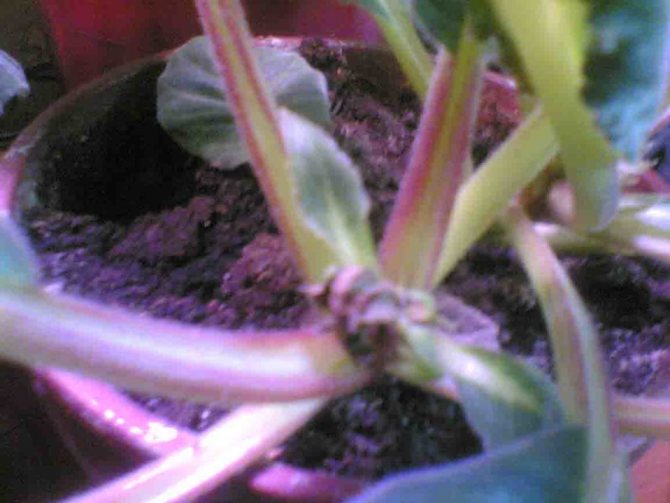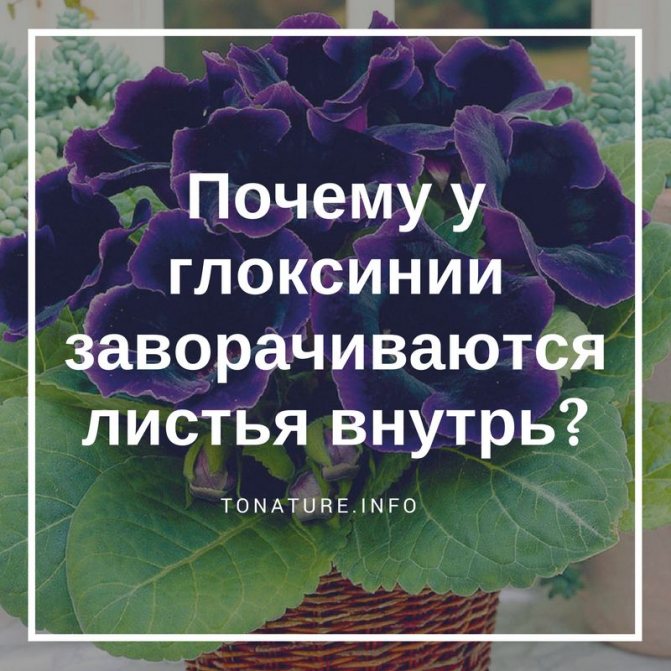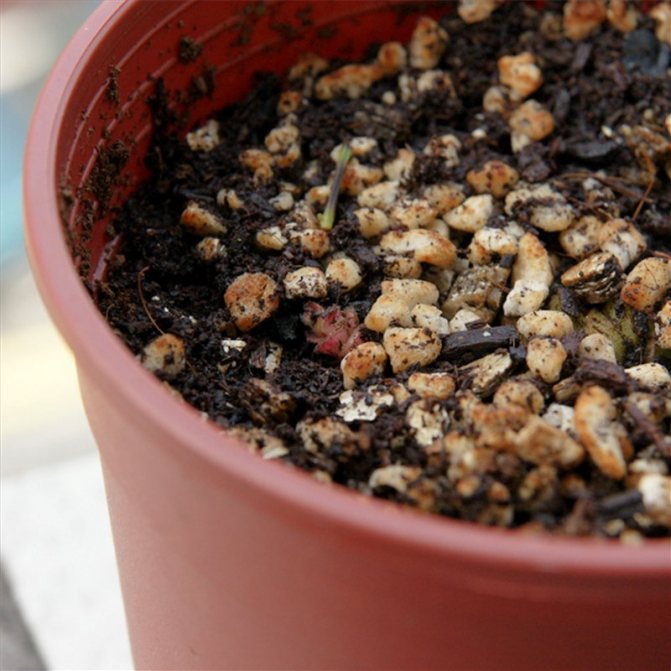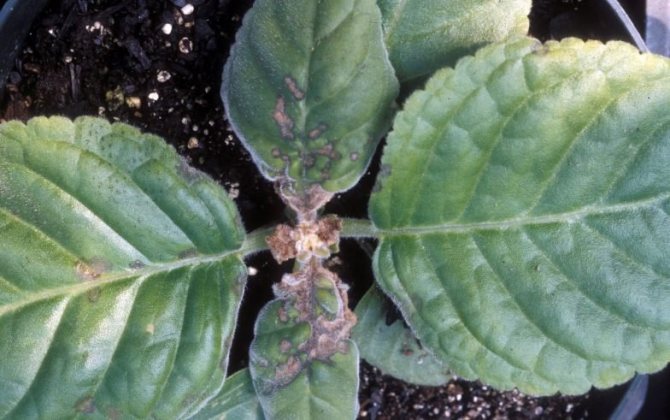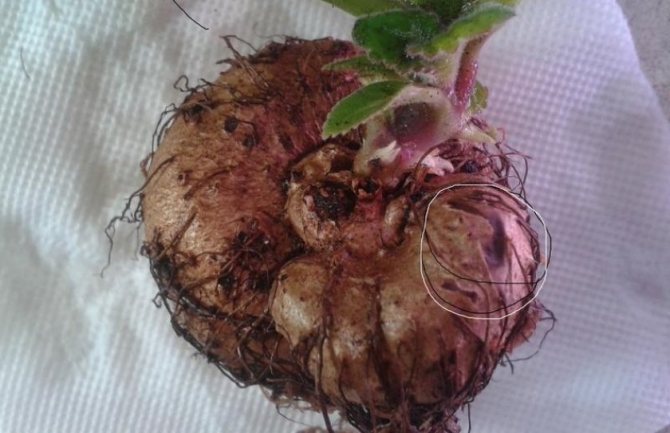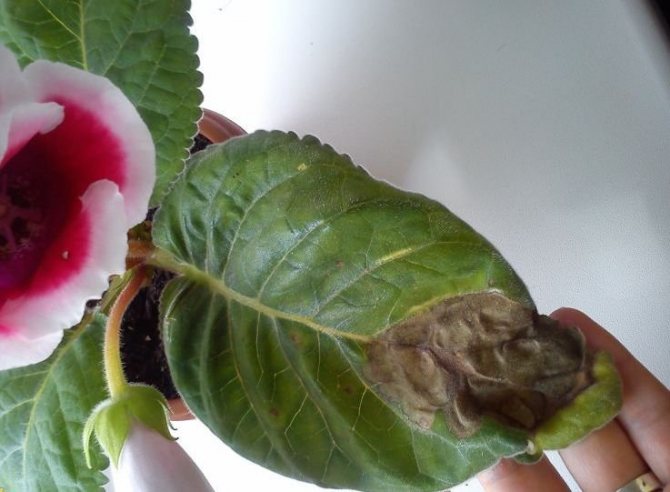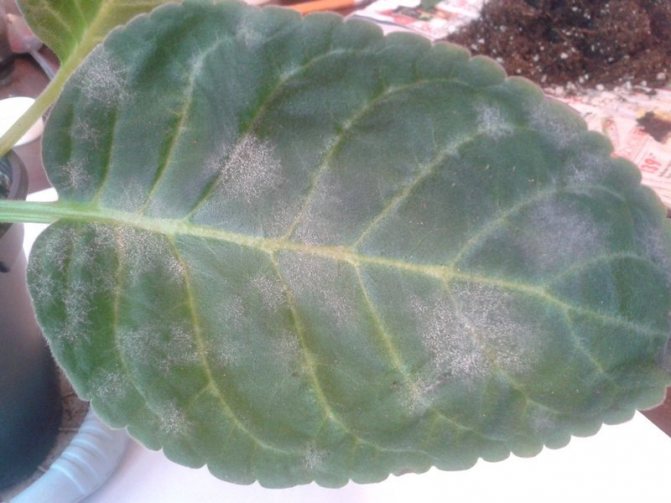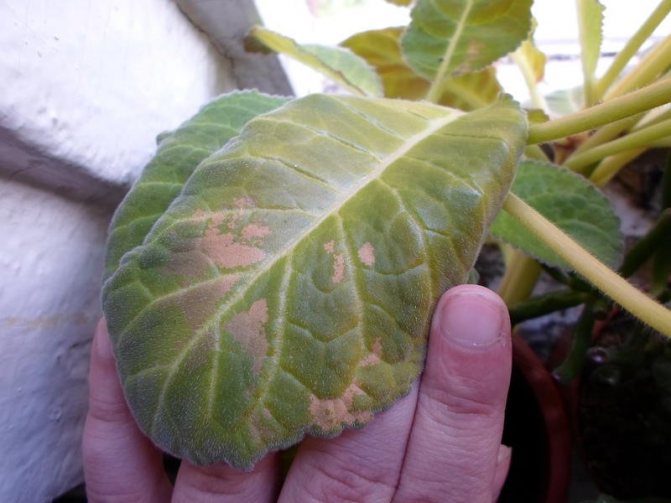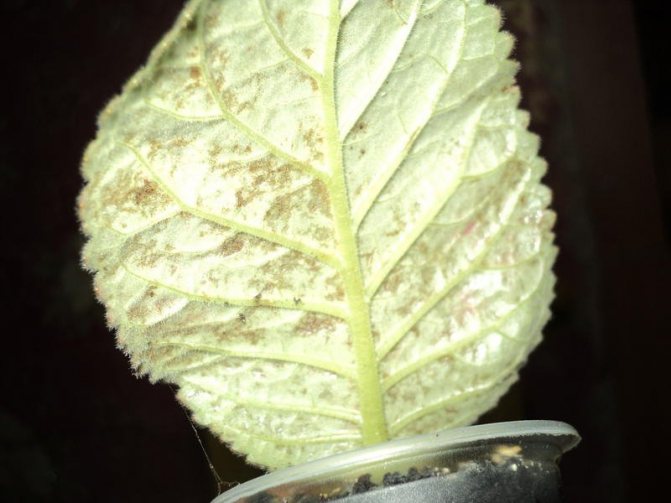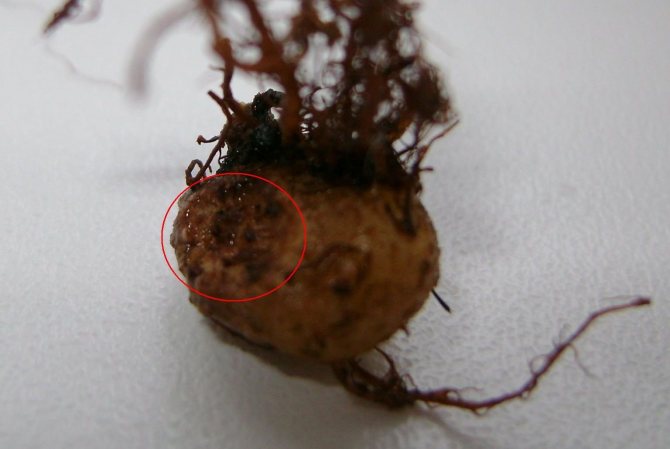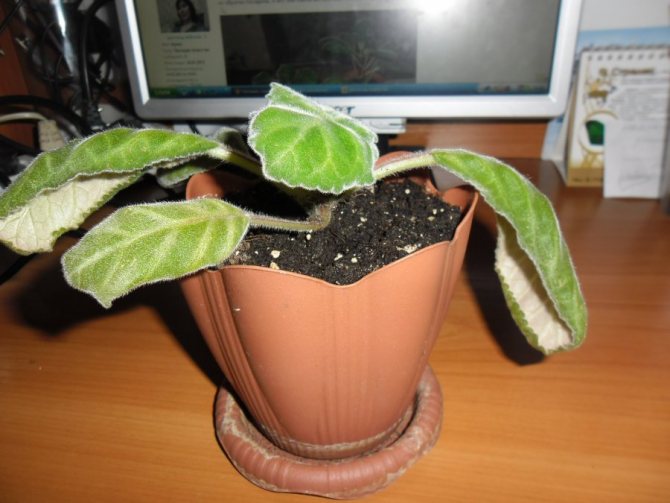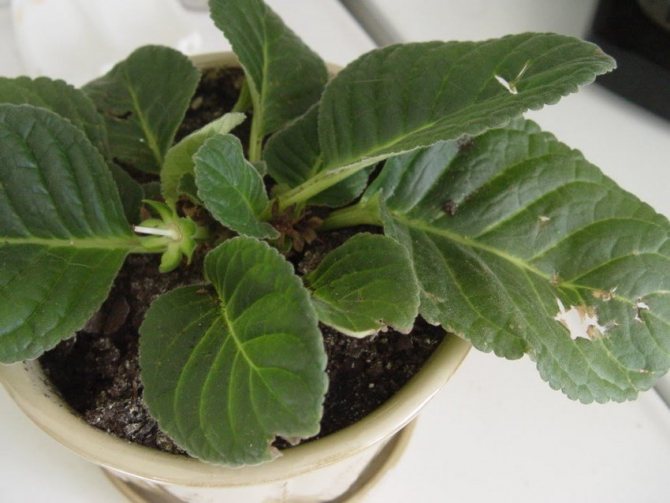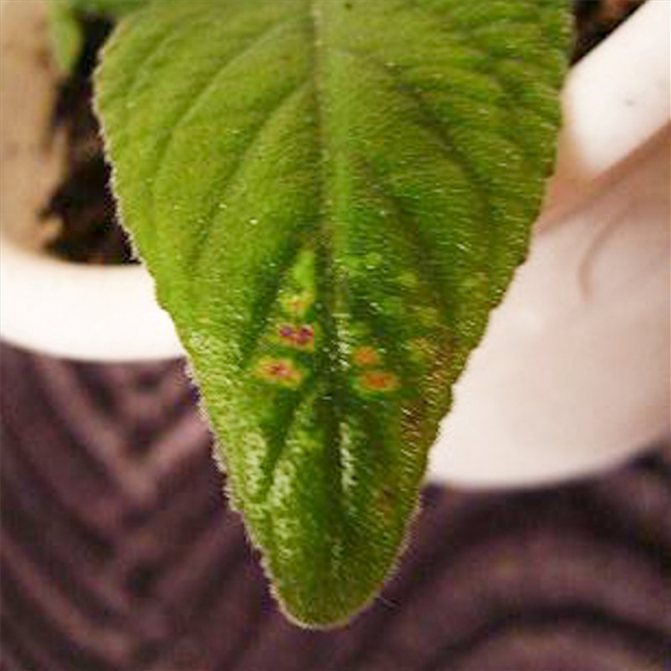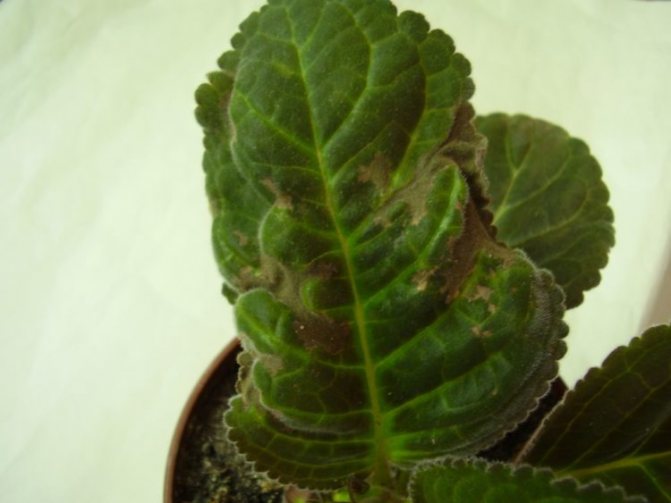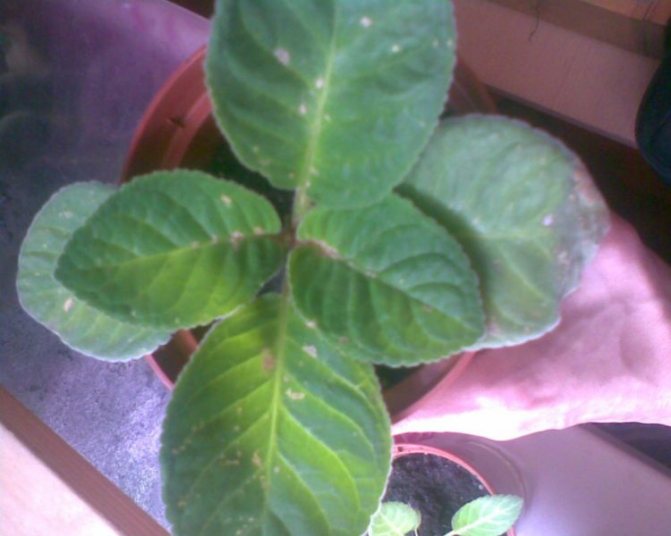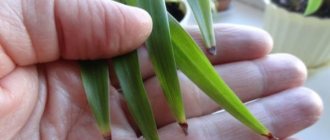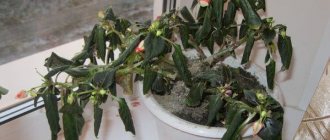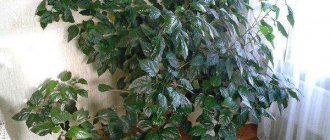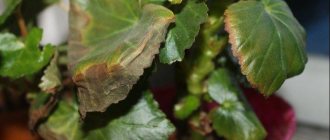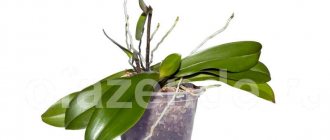Why do Gloxinia's buds rot?
If you are faced with the fact that the buds of your gloxinia began to rot, there may be several reasons for this problem. One of them is over-watering the plant. If the buds are rotting due to excessive moisture in the soil, you just need to adjust the watering. The buds can start to rot if the gloxinia grows in too acidic soil.
Try replanting the plant by completely replacing the soil. And another reason for rot can be an excess of nitrogen in the soil, which occurs due to the use of fertilizers containing nitrogen. To avoid this, use exclusively complex fertilizers for gloxinia, which include not only nitrogen, but potassium, phosphorus and other useful substances.
One of the reasons the buds dry out is because of the lighting. A lot of light is bad, little is also a disaster. Therefore, when choosing a place for a pot with gloxinia, it is necessary to take this feature into account, and position the plant so that the lighting level is optimal. Then the flowering will be abundant and bright.
Also, among the reasons that can lead to the fact that gloxinia buds dry out and not bloom, they emit:
- excessive moisture in the soil and air;
- cold;
- high temperature in the room;
- stale air;
- drafts;
- excessive or insufficient feeding;
- dry air.
As you can see, there are a large number of factors on which the duration and abundance of flowering depends. And if a problem is identified, it is worth considering all of them in order to provide timely assistance to the flower and not lose it.
Watering the plant is the next thing to consider. If it is carried out in violation, then the buds do not open, the leaves die off, the root system suffers.
Proper watering is essential for gloxinia. Water must flow to the roots through the soil, so it is carefully poured along the edge of the pot so as not to flood the outlet. Excess water is removed from the pan so that the roots do not start to rot. During the cold season, watering can be reduced to spraying, but at the same time it is necessary to monitor the condition of the soil and prevent it from drying out, realizing that the plant needs moderate moisture for normal growth. For watering and spraying, only settled water at room temperature is used.
Gloxinia also needs special attention during the heating season. At this time, the air in the room is rather dry; in such conditions, the buds rarely open. It is recommended to periodically spray the flower, however, in this case, you should adhere to the "golden mean". Excessiveness harms the plant.
These are the main points of care, the violation of which can disrupt the proper growth and flowering of gloxinia. But in addition to them, it should be understood that at too low a temperature and in drafts, gloxinia also wither and fall off the buds.
Now about feeding. The lack of nutrients in the soil does not allow the plant to gain strength and fully realize itself: to form flower stalks and bloom. If the buds turn black, and then begin to dry, then this is a sure sign that there is a small amount of trace elements in the soil. This means that the indoor flower needs feeding. Phosphorus-potassium fertilizers are best suited for these purposes.
If they are found, the flower should be immediately treated with insecticides.
With improper care of gloxinia, their buds not only dry, but also rot. And this happens for several reasons. The first of them that you should pay attention to is the condition of the soil. If the soil in the pot is too wet and practically does not dry out, then this may well lead to the formation of rot not only on the tubers, but also on the surface of the flower. If this is the case, then reducing watering helps restore the condition of the plant.
Also, the buds rot if the soil in the pot is too acidic and contains a lot of nitrogen. In this case, it is recommended to transplant the flower. And for feeding, use special fertilizers that include potassium, phosphorus, nitrogen and other elements. If such a problem arises, then the rotting bud is plucked, and the plant is treated with a fungicide. For these purposes, use "Fitosporin", "Maxim" or other drugs in this group. Dosage and frequency according to the instructions for use.
Gloxinia inflorescences also rot when they are too cold. Low temperatures can cause tremendous damage to the plant.
In any case, if rot appears, then it is necessary to establish the cause and eliminate it. Then remove all parts of the flower that are rotting, and only then treat the plant with anti-rot drugs.
If you are faced with the fact that the buds of your gloxinia began to rot, there may be several reasons for this problem. One of them is over-watering the plant. If the buds are rotting due to excessive moisture in the soil, you just need to adjust the watering. The buds can start to rot if the gloxinia grows in too acidic soil.
To save the gloxinia tuber from rotting, treat the plant with a fungicide two to three times.
Gloxinia pest control methods
In addition to diseases, the normal development of gloxinia can be disrupted due to the fact that the plant has been attacked by harmful parasites - insects and ticks. The following are the most common representatives of this category.
Spider mite
Traces of the spider mite's vital activity are easy to notice in the form of small light spots on the leaves and characteristic spider webs, as if entangling individual parts of the plant. Having found such symptoms, it is necessary to carefully treat the stems and leaves with soapy water, alcohol or infusion of garlic or onions with a cotton swab. Usually such a procedure in the early stages is quite effective.

If it was not possible to destroy the pest, and repeated treatments also do not give a result, you can resort to acaricidal preparations, such as:
- Flumite;
- Actellik;
- Fitoverm;
- "Skelta";
- "Neoron".
Cyclamen mite
This pest is clearly visible on the plant, if armed with a magnifying glass. It is quite simple to distinguish it from other ticks and insects - its body less than 1 mm in size is almost transparent. Flowers affected by the cyclamen mite wither quickly, and large colonies of the parasite are visible on the leaves, similar to dust deposits.
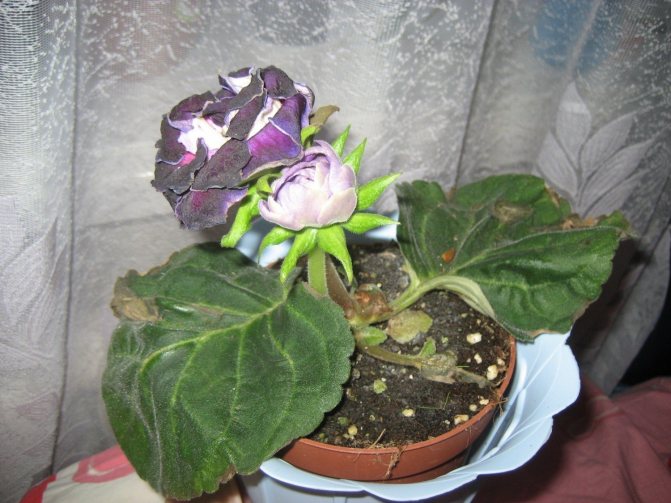

The cyclamen mite is considered more dangerous than its spider mite. The control measures for these pests are the same, but in order to get rid of the cyclamen mite, at least three treatments must be carried out.
Thrips
Thrips are small insects that suck the sap from the plant and completely disrupt its development. The lesion is manifested by the appearance of small light dots on the aerial parts of the flower, as well as characteristic gray stripes on the front side of the leaves. Later, the dehydrated plate becomes brown, withers, rolls up and falls off. The same happens with flowers.
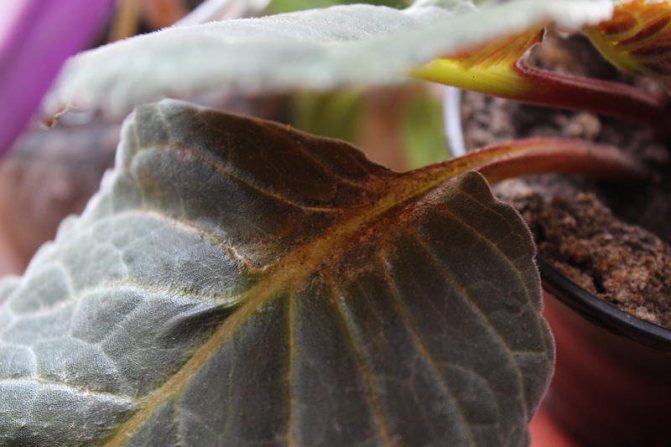

You can fight thrips on gloxinia with the help of neurotoxic drugs such as Apache, Dantop or Mospitan.Hormonal agents that stimulate the production of chitin, such as Kiron, Pegasus, or Renegade, may also be effective. Stronger, but at the same time toxic drugs - insecticides: "Nurel-D", "Marshal", "Bi-58" and others.
Shield
The scale insect is a small insect covered with a dense shell that parasitizes many houseplants. Its presence can be recognized by dense growths, similar to scales, appearing on the green parts of the flower and difficult to separate when trying to remove them.
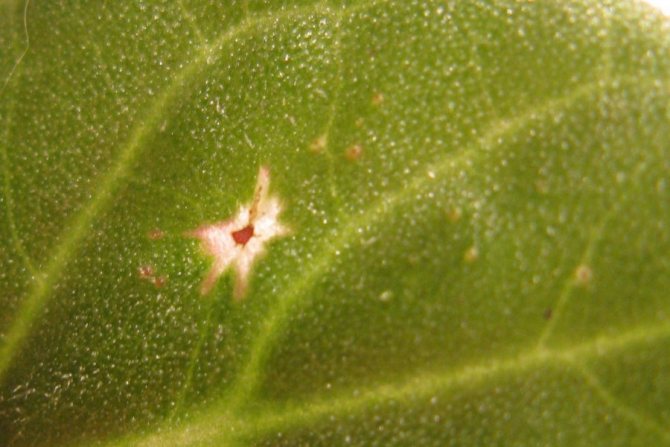

In the early stages of the lesion, the usual treatment with soapy water or alcohol can help cure gloxinia, as in the fight against ticks. Among the insecticidal preparations that can be used in more severe stages, one can mention "Phosbecid" or "Actellic".
Whitefly
It should be noted that among the huge variety of varieties of this insect on indoor plants, only one parasitizes mainly - the greenhouse or greenhouse whitefly. The easiest way to recognize this tiny butterfly is by gently shaking a pot of gloxinia: insects in huge numbers will rise into the air and easily reveal themselves.
On the back of the leaf, it is also good to notice light clutches of eggs - another way to recognize whitefly. The affected plant becomes covered with an unpleasant sticky coating, as the parasite multiplies, the leaves turn yellow, wither, curl and fall off.
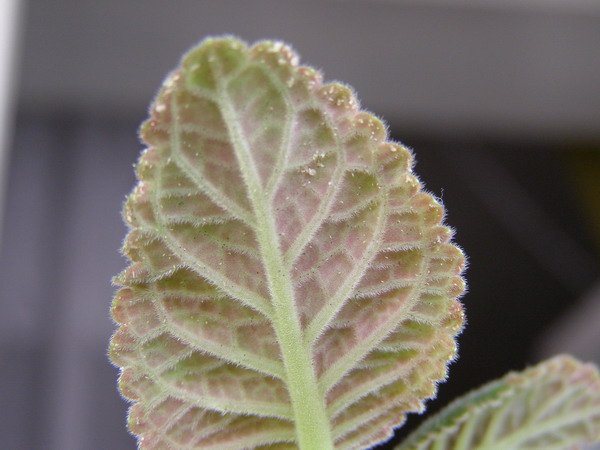

A regular shower can help get rid of the whitefly, but it is better to use standard soap or alcohol treatment. If you want to use chemicals, you should pay attention to such drugs as "Aktara", "Iskra" or "Fitoverm".
Mealybug
This insect can reach a length of 1 cm, so it can be seen with the naked eye on a houseplant. It is even easier to recognize traces of the pest's vital activity - a white loose plaque in the leaf axils and on other parts of gloxinia, which can be easily removed, as well as sticky spots of honeydew.
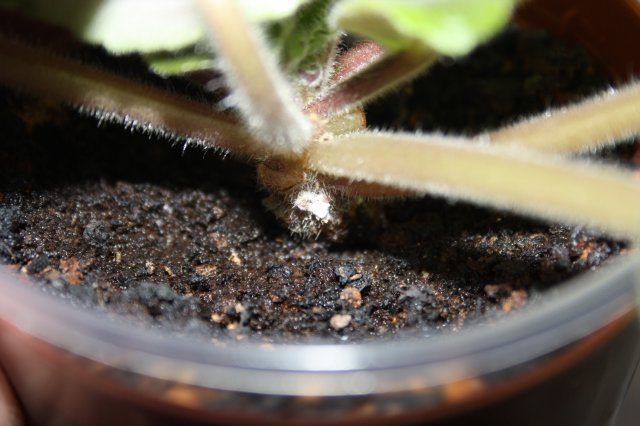

If you can't kill the mealybug with soap, garlic, or alcohol, you can use an insecticide. Almost all drugs in this category are quite effective against this pest, so you need to choose a less toxic one. A good option is, for example, "Dr. Foley".
The main diseases of gloxinia
The fact is that just feeding and watering this plant in a timely manner is not enough. It is very demanding on the place in which it is located, on exposure to sunlight and air temperature.
The problem of dropping flowers and leaves is most often associated with hot air temperatures. It is possible and necessary to deal with this. Try increasing the humidity by placing the gloxinia pot on a pallet of wet sand, pebbles, or peat.
Also, insufficient watering affects the lowering of the plant. Perhaps the ground is wet on top, but dries up inside. To fix this, immerse the flower container in a larger container of water for 20 minutes. The whole earth will get wet and the plant will come to life.
If the gloxinia blooms luxuriantly and has luxurious leaves, and the pot is still the same one that was sold to you with the plant in the store, then the flower simply does not have enough space for normal development. Try setting aside a larger container for your gloxinia.
The most unpleasant reason for leaf drooping is tuber rot. In this case, the crown of the plant and the leaves must be treated in a solution of chlorine bleach (can be replaced with potassium permanganate). Try to remove the tuber from the soil, rinse, remove all rot and also treat with a solution of potassium permanganate.
Gloxinia is best grown in a well-lit place with partial shade. Direct sunlight will cause both leaves and buds to wilt very quickly. Try to feed the flower at least three times a month.Gloxinia loves most of all nitrogen, phosphorus and organic fertilizers.
Proper care of the plant will provide gloxinia with luxurious flowering, and you will be in a good mood.
Best regards, Eugene.
If you want gloxinia to delight you with generous flowering, then you need to know what leaf diseases are and how to treat them, as well as familiarize yourself with the main difficulties in growing it.
Late blight
The infection spreads through soil, contaminated planting material, equipment, or rainwater.
The incubation period of the disease is on average two months. Infection of plants with a disease can be facilitated by:
- incorrect watering;
- dense soil;
- too close placement of bushes;
- stagnant water;
- high air humidity;
- low ambient temperature.
The main sign of gloxinia disease is the appearance of brown spots on its leaves, surrounded by a pale green border. Sometimes on the bushes you can notice the appearance of a whitish bloom on the inside of the leaves, which becomes more noticeable with increased humidity. If your gloxinia leaves dry, and you have to figure out what to do, then remember that the best way to fight this infection is to destroy the plant, since there is no effective drug against late blight, and therefore the main task of any plant breeder is to prevent the spread of the disease.
We suggest that you familiarize yourself with: Auspicious day for a pepper transplant
For prophylactic purposes, it is recommended to spray the bushes with drugs such as "Polycarbocid", "Kaptan" and "Tsineb".
Fusarium
The source of infection is contaminated seed and soil. First, the pathogen affects the small roots, and after the growth of the mycelium, larger roots are also involved in the pathological process. The spread of infection occurs through the vessels of the plant, first the stem is affected, and eventually the whole plant.
The lower leaves die first, and all the rest become watery. Individual areas of the leaves can acquire a pale green or light yellow color. To stop the spread of infection, all diseased plants should be removed immediately. As a prophylactic agent for treatment, you can use "Fundazol".
Gray rot
Gray rot is a dangerous infectious disease resulting from improper care of gloxinia. The infection spreads rapidly, affecting the tubers of young plants. When a bush is infected with gray rot, the plant begins to develop slowly and bloom poorly.
To prevent further development of infection, all areas damaged by the fungus on the tubers should be removed to healthy tissues. To prevent re-infection, the cut site is dried, treated with sulfur or crushed charcoal, and only after that is it again planted in the ground.
Blackleg
In the affected plants, the root collar suffers first of all, as a result of which the stem begins to creep along the ground as if cut down.
To prevent the development of infection, before planting the plants, you should first disinfect the soil by heating. When a bush is infected, it is treated with a solution of copper sulfate. Before or after planting seeds in the soil, the soil is treated with charcoal or colloidal sulfur. Watering should also be adjusted, since excessive soil moisture contributes to the development of infection.
Powdery mildew
Powdery mildew is caused by a fungal infection. The disease is characterized by the appearance of a powdery bloom on the plant: outwardly, the plants look as if someone has sprinkled them with flour. Excessive watering and sharp temperature fluctuations are considered predisposing factors contributing to the development of the disease.
The source of the disease is soil or infected planting material.If the bush is affected by powdery mildew, it is recommended to destroy it to prevent the spread of infection. However, at the initial stage of the disease, the plant can be saved by treatment with any fungicidal preparation, for example, "Vectra".
Reasons why gloxinia does not bloom
The main factors due to which gloxinia does not bloom include the following:
- middle-aged tuber;
- the defeat of the tuber by various infections;
- oversupply of fertilizers;
- contaminated soil;
- insufficient lighting along with high ambient temperatures;
- unbalanced fertilizer input;
- unsuitable temperature regime;
- insufficient humidity;
- incorrect fit;
- improper care.
Anthracnose
Anthracnose belongs to fungal diseases. Its main symptoms are brown spots that suddenly appear on the leaves of gloxinia. Over time, the spots attack the shoots and stem of the plant, which can cause them to rot and decay.
If left untreated, anthracnose may well kill your pet.
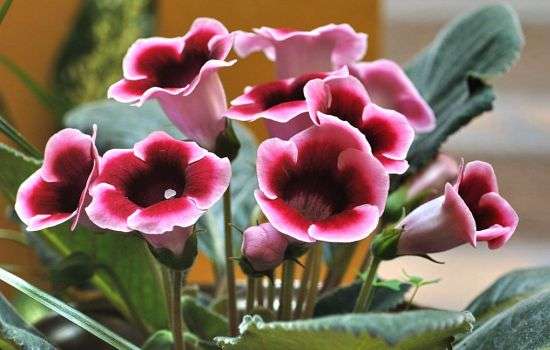

Anthracnose usually attacks those plants that are mechanically damaged or grow without proper care. Its development is accompanied by high air humidity and a high pH level in the soil, as well as a lack of potassium and phosphorus.
To protect gloxinia from anthracnose, it must be sprayed with oxychom, cuproxate, or copper oxychloride.
Get in the habit of disinfecting all inventory after use, and also making sure that the plant does not become the object of attack by pests.
If the gloxinia is heavily infected with anthracnose, you will need to eradicate it to prevent the fungus from spreading to other indoor plants. At the initial stage, this disease can be cured, for which it is necessary to remove the parts of gloxinia affected by the fungus and subject the plant two or three times to fungicide treatment with an interval of one and a half to three weeks.
Anthracnose can be carried by equipment, pests and rainfall. Therefore, you should not expose the plant to the street in rainy weather.
Causes of the problem
There are not only the reasons discussed above, but also diseases and pests that prevent the plant from blooming.
Briefly about why it does not bloom:
- Bad light.
- Lack of nutrients.
- Unsuitable pot.
- Incorrect containment temperature.
- Excess nitrogen in the soil.
- Dry air.
- Lack of a full rest period.
Diseases
Most often, indoor plants are affected by fungal infections that inhibit development and can completely destroy the plant. It looks like wilting with various spots and rotten areas.
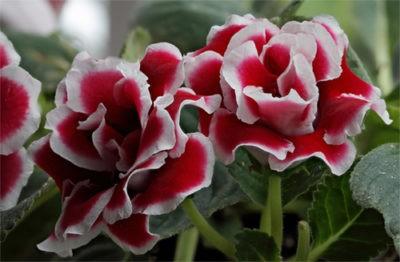

You can try to save the plant:
- Remove affected areas.
- Carefully remove the plant from the soil.
- Examine the root.
- Cut off rotten areas on the tuber with a sharp knife and process with crushed coal.
- Spray the plant along with the tuber with fungicides.
- Plant in clean soil.
If the root collar has rotted, then the growth point that is still available will be the only salvation. If there is none, there is no point in saving gloxinia.
Attention! The cause of diseases is improper care and conditions of detention. This is especially true for watering and air temperature.
Care errors
Gloxinia belongs to the Gesneriev family. Like all representatives, she prefers an abundance of light. Moreover, at different stages of development, lighting does not need to be the same.
In early spring, when the shoots are just beginning to grow, it is better to remove the pot to the south window. In the summer, during the flowering period of gloxinia, the plant is taken out to the eastern or western windowsill. For normal development, a flower needs 12-14 hours of light a day.
It is not unimportant for gloxinia to maintain a temperature regime. If the tuber is just planted, then the temperature is maintained at 23 ... 25 ° C. When sprouts appear, it is lowered to 20 ° C.During the flowering period, the temperature in the room should not drop below 18 ° C, otherwise gloxinia will slow down growth, drop the buds or disappear altogether.


In addition to lighting and temperature, the flower needs high humidity. Optimally 60 - 80%.
IMPORTANT! Gloxinia leaves do not tolerate spraying, therefore, it is necessary to increase the humidity in other ways.
insufficient lighting; lack of fertilizing; too large a pot; low temperature in the room.
The lighting and temperature conditions for gloxinia have already been discussed, so let's talk in more detail about feeding. For normal flowering, the plant is regularly fed with organic and mineral fertilizers.
At the beginning of growth, organic matter is introduced, after two weeks they switch to complex mineral mixtures for flowering. You can use fertilizer for violets. After flowering, the amount of dressings is gradually reduced, and the tuber is prepared for hibernation.
Gloxinia does not bloom for a long time if the tuber is planted in a spacious pot. The smaller the container, the larger the bells. There should be no more than 2 cm between the tuber and the sides of the pot.
IMPORTANT! The old gloxinia tuber does not bloom regularly, it is better to renew the plant.
Lack of air humidity and too bright lighting in summer leads to dryness of the tips of the leaves.
If the flower stands in direct sunlight, then it must be shaded, otherwise it will not work to avoid burns. Over time, the leaf changes color to a pale green, after which it dies off completely.
If the lower leaves dry and die off, gloxinia may have a period of acclimatization. The plant is difficult to tolerate moving and new growing conditions. Try to create suitable conditions and after two weeks the flower will get used to it.
Gloxinia leaves are often stained and dry from overflow. The plant is watered as needed, its roots are thin, so they can quickly rot.
IMPORTANT! The soil should dry out between waterings.
In the summer, watering is increased, but the condition of the flower is monitored. The soil is moistened only with warm water.
When all the conditions are met, and the care of the flower is not violated, then the leaves can dry from the spider mite. Infection could have occurred in the store or from other plants in the house. The flower quickly sheds its leaves, it will not work quickly to cope with this. First, all the affected parts are cut off, then the tuber and soil are treated with soapy water. After a week, the treatment is repeated. If it does not help, then chemical preparations are used.
For good growth of synningia, the following conditions must be observed:
- Gloxinia pots should not be too close to each other.
It is necessary to ensure that the flowers do not touch each other with leaves. If there is not enough space, the flower can stretch out. - Light and sound soil, timely fertilization of the soil.
In this case, it is best to choose a peat-based soil. Top dressing needs to be applied several times a month, but preferably no more than three (read about how to properly water and feed gloxinia in our material). Potassium monophosphate or Fertika Lux should be used. - The temperature should be between 18-25 degrees.
If the temperature is too low, the development of gloxinias will stop, and at high temperatures, on the contrary, the flowers do not open well, the plant loses the turgor of the leaves (you can find out why the buds turn black, dry, rot and do not open here). - Good lighting, which should be diffused and bright.
You need to put the plant on the windowsill so that it faces east or west. The daylight hours should last 12-14 hours. - Timely soil moisture.
Between irrigations, the top layer of the soil should have time to dry out a little. Watering should be done through the pallet or along the edge of the pot. Only room temperature water can be used. After moistening, excess water should go through the holes in the pot (you can find out what kind of pot you need for gloxinia here).
We suggest you familiarize yourself with: Ants in the garden how to fight
Growing gloxinia will not cause any trouble for both an experienced and a novice grower, but only if the basic rules of care are followed. In order for a plant to enjoy its generous flowering, it must receive sufficient light, moisture and feeding. Gross cultivation mistakes may not kill him, but they will significantly affect the quality of flowering and visual appeal.
If you are interested in the question of why gloxinia's leaves began to curl inward, then the answer to this question is easier than you think. Gloxinia leaves curl if the air is too dry in the room or if it suffers from cold. Also, plant breeders sometimes may be faced with the fact that for some reason the buds of gloxinia begin to dry out.
The reason for these troubles lies in the lack of moisture in the air and too high an ambient temperature. The plant feels comfortable only in conditions of high humidity and appropriate temperature, and therefore their maintenance is vital for it. Sometimes the problem can be solved by feeding the plants with potassium-phosphorus fertilizers. In addition, the leaves of gloxinia curl if a spider mite settles on them.
Lack of fertilization is a serious problem for gloxinia, which naturally grows on nutrient soils. Lack of calcium leads to the fact that all of its young leaves of the plant lose their color intensity and may even curl and turn pale. An excess of this element is manifested by the appearance on the leaves of light, shapeless necrotic spots or interveinal chlorosis.
That the plant suffers from
will tell you the rich dark green color of the leaves with a light blue tint, as well as the appearance of brown or red-purple spots. Pathological changes are first observed on the lower leaves, but gradually the whole plant is involved in the process.
The development of the bush is greatly slowed down. If new leaves appear, then they are smaller, flowering is either absent altogether, or is greatly delayed. If the buds of a plant turn black, then this may be a sign that it has wintered at low temperatures, suffers from a lack of nutrition and excessive watering.
Lack of nitrogen is no less dangerous for gloxinia. Plants use nitrogen as a building material for protein, in addition, the element is part of chlorophyll. With a lack of nitrogen in the plant, a significant inhibition of the growth rate is observed, and its shoots become thinner, the size of the inflorescences decreases. In general, the bush looks weak and lifeless, and its leaves acquire a pale green color.
If gloxinia suffers from
yellowing and lightening begins with the veins and adjacent parts of the leaves. Parts of the leaves that are at some distance from the veins, even with a strong lack of nitrogen, can retain their natural color. If the bush does not receive enough nitrogen, then green veins are practically never observed on its leaves.
However, these symptoms should not be confused with the natural aging of the leaf, since the degradation of the leaf plate in this case starts from the interveinal space. The old lower leaves primarily suffer from the lack of a trace element, but over time, changes become visible on all parts of the plant. Sometimes, with a chronic lack of nitrogen, all the leaves of gloxinia gradually begin to dry and fall off.
If you notice that the gloxinia is very elongated in height, then this may also be a sign that the plant is suffering from overfeeding with nitrogen or it does not have enough light. In this case, it is necessary to immediately provide the gloxinia with sufficient light and stop feeding with fertilizers.
If the leaves of gloxinia have acquired a dark green color and become larger and more juicy, and flowering is delayed, then this is a sure sign that the plant has been overfed with nitrogen and the introduction of this microelement should be stopped for a while.
Overfeeding and underfeeding equally negatively affect the development of the bush: if the plant does not receive nutrients, there is a significant decrease in its growth rate, as well as a delay or absence of flowering. The main danger of overfeeding is that in this case the plant may suffer from chemical burns.
Excessive watering, excess nitrogen and increased acidity of the soil are the most common causes of decay of gloxinia. If the plant completely wilts, its leaves begin to dry and fall off, then this is a sure sign that the tuber is rotting in gloxinia. At the initial stage, the disease makes itself felt by the loss of leaf turgor, which does not recover after watering.
When the tuber decays, in order to save the plant, you need to thoroughly clean it from rot, cut off all the leaves from it and soak for 20 minutes in a steep solution of potassium permanganate, then dry it, treat the damaged area with crushed charcoal and plant it in slightly moistened soil. After transplanting, the plant should receive a minimum amount of moisture.
Gloxinia does not bloom


Very often, inexperienced growers, wanting to provide gloxinia with all the necessary nutrients, intensively feed it with nitrogen. However, as a result of the excessive introduction of a trace element, the plant, on the contrary, completely refuses to bloom. The thing is that gloxinia does not react well to overfeeding with nitrogen. This element perfectly stimulates the growth of green mass, but at the same time causes a delay in flowering.
Powdery mildew
- The most common reason for the drying out of gloxinia, and this process begins precisely with the leaves of the plant, can be considered abundant improper watering. In this case, not only the leaves of gloxinia, but also its roots will rot and dry out. But, despite this, gloxinia feels very well with high humidity, often because of its lack, the leaves of the plant dry up.
- Despite its thermophilicity, gloxinia will not tolerate too hot a location. Dry air will lead to the drying of its leaves. Knowing this, gloxinia should not be placed under the ceiling (on cabinets), and it should be kept as far away from heating devices as possible. If nothing can be done and the air is still too dry for gloxinia, spray it with water several times a day, the temperature of which should not be higher or lower than room temperature.
- When gloxinia is purchased recently, some of its leaves may begin to turn yellow and dry. This phenomenon will disappear as soon as gloxinia adapts. If adaptation does not take place for a long time, then it is necessary to transplant gloxinia into another “better” land.
- Gloxinia needs to be fed from time to time, and the soil and plant surface should be periodically treated from pests. It is advisable to do this shortly before the flowering of gloxinia and in moderation, so that during this wonderful period the plant smells of strength and health.
- Gloxinia leaves can also dry out from the fact that they simply do not have enough light, or, conversely, too much. The best option for placing a gloxinia pot is a windowsill. You need to put the flower in a light partial shade. So you will protect the plant from strong sunlight and at the same time provide it with the right amount of light.
- When gloxinia leaves are eaten by a spider mite, the plant will begin to dry out and ache. If gloxinia has an infectious disease, some of the lower leaves can dry out quickly. If the treatment is not carried out, the whole plant will begin to dry.
How to make bloom at home?
Why does the plant not bloom, but produces buds, which then dry up and what to do? There are several reasons for this problem.It is necessary to eliminate them and create the right conditions for the plant.
Let's consider the most effective solutions:
- How to feed gloxinia for abundant flowering? Any complex, preferably in liquid form, mineral fertilizer, which is intended for flowering plants. Do it 3 times a month, starting two weeks after spring planting. Young seedlings begin to feed when new shoots with leaves appear. Feed until autumn. If fertilizer is not on hand, pour an ash solution over the flower.
- Give more light! Gloxinia is very fond of sunlight, it needs 12-14 hours of daylight hours in order to release flower stalks. In the spring, it is necessary to supplement the plant. For this, phyto-lamps, or fluorescent lamps with suitable characteristics are used.
- Put her in a suitable pot! If the gloxinia is in a container that is too spacious, then it will not bloom. A wide and low pot of small volume is required. The soil in the pot should be slightly larger in volume than the tuber itself.
- Be careful with nitrogen! If your gloxinia has thick leaves and dark green stems. There are a lot of leaves, that is, perhaps there is a nitrogen overfeeding. Either there is too much humus in the soil, or the wrong fertilizer was chosen with a high percentage of nitrogen. Or both. You can fix it only by transplanting the flower into poor soil with a high content of peat. Feed only the correct fertilizers and in accordance with the instructions.
- Is the girl warm to you? If the room where the gloxinia pot stands is cool, then flowering will not occur. Content is required at a temperature of 20 to 25 degrees. This also includes the presence of drafts and a cold window sill, from which the soil in the pot has a low temperature.
- The radiator is the enemy of plants! During the heating season, plants can suffer from too low humidity, hot dry air rises from the radiators directly to the plants on the windowsill. Build a protective screen, or create moist air around the flower. You can put a tray with water, or spray water from a spray bottle into the air. Only on a flower in any case do not fall!
- Have a rest, or not? Gloxinia should rest for 4 months in winter. The tuber is dug up and stored in a cool dark place, in a bag with slightly damp sand. If the rest did not last long, there were not the right conditions, then the plant will not be able to fully bloom. In the case of young plants that have not yet grown a tuber, it is left in a pot. But they are also removed to a dark place with a temperature of 12-15 degrees. It is important not to allow the soil to dry out during this period. It is unlikely that it will be possible to force the plant to bloom in case of incomplete rest.
Ascochitosis
Ascochitis is a fungal disease, the main signs of which are brown or red spots with a brown rim that appear on the leaves of the plant. The development of the disease is facilitated by the high humidity in the room where gloxinia grows.
We suggest that you familiarize yourself with: How to choose a walk-behind tractor: Types, types, which is better for the garden
If you find signs of ascochitis in your pet, urgently remove the affected leaves and burn them. Treat the plant with Bordeaux mixture, copper sulfate or fungicides such as Vectra, Abiga-peak. After seven to ten days, the treatment should be repeated.
Gloxinia - causes of leaf folding, methods of struggle, video
During the vacation I took Gloxinia home from work. In the office, the flower was healthy, with normal even leaves, and at home, after two weeks, the leaves were almost all curled up. Tell me why gloxinia leaves curl inward and how dangerous is it for a flower?
Gloxinia is a member of the Gesneriaceae family and came to us from the distant forests of America.This is a perennial shrub with beautiful decorative leaves, which also blooms very beautifully with velvet bells. The leaves themselves are also covered with a small pile, are oval or elongated, and have small denticles along the edges.
Gloxinia usually has even leaves, but sometimes growers are faced with such a problem as changing the shape of the leaf plate. Outwardly, the plant remains healthy, the leaves retain their color, but the edges begin to curl under the bottom of the leaf, resembling an inverted spoon. Sometimes the lower leaves literally lie on the windowsill and seem to try to crawl under the pot.
The reasons why the leaves of gloxinia turn inward can be very diverse, because the flower is very sensitive to the slightest changes. Most often, this phenomenon occurs as a result of:
- violations of conditions of detention and care;
- if damaged by pests.
Care errors
Gloxinia leaves fold if:
- The room is too hot or too cold. The optimum temperature for growing a forest beauty should be between 18-22 degrees Celsius. If the room is cold in winter and hot in summer, the leaves will react first. It is important to choose a place for the plant where it would be comfortable all year round, or, according to the season, move the pot to a more suitable room (warm or cool).
- The air in the room is too dry. By its nature, gloxinia simply adores high humidity. In a dry room, the leaves do not have enough nutrition and they wrap up. It is especially important to monitor the humidity in hot summer and winter (when heating is on). At this time, it is recommended to put a container of water near the gloxinia, in addition, periodically spray it.
- The flower got caught in a draft. Airing the room is a prerequisite for growing gloxinia, provided that drafts are excluded.
- The plant stands on the southern windowsill. Direct sunlight is harmful to gloxinia, so for the summer you need to rearrange it or shade the window.
- Gloxinia was poured. Excess moisture adversely affects the appearance of the flower, and in the case of constant overflows, it can lead not only to the folding of the leaves, but also to the decay of the plant.
Unfortunately, it will not be possible to return the leaves to their previous shape, but subject to all the rules of care, over time, gloxinia will grow new, beautiful leaves, and the old ones can be cut off.
The presence of pests
Gloxinia leaves roll up if thrips or ticks have settled on them. In this case, it is urgent to take action and treat the plant with insecticides (Aktara, Karbofos), otherwise it may die.
Video about proper care for gloxinia
(2 ratings, average: 5.00 out of 5) plant diseases gloxinia care
www.glav-
Phylostictosis
It is characterized by the appearance on the leaves of the plant of dark, rounded spots with a brown center.
As the leaf grows, tears appear in place of these spots. Having found such signs, immediately dry the plant, since the development of this disease is facilitated by increased air humidity. Preparations based on copper, that is, Bordeaux liquid, copper oxychloride or copper sulfate, will help get rid of phyllostictosis.
It is characterized by the appearance on the leaves of the plant of dark, rounded spots with a brown center.
How to keep gloxinia from curling leaves?
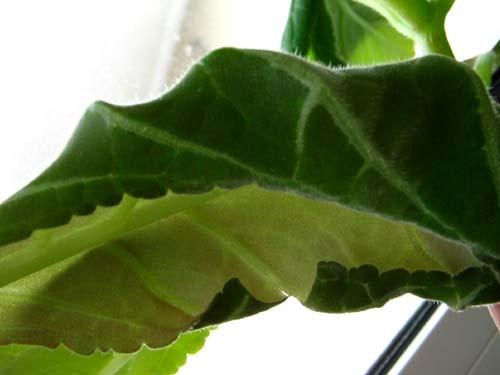

Gloxinia is beautiful not only during flowering, when large multi-colored inflorescences are revealed on a small bush, similar to delicate bells or graceful roses. The flower looks no less beautiful without buds with its gorgeous leaves, velvety and pleasant to the touch. However, flower growers often notice that the once even leaf plates begin to take on a bizarre shape - they either curl slightly, or literally curl almost into a tube, or bend down so that they directly embrace the flowerpot.
There may be several reasons why gloxinia leaves curl:
- violation of the rules of care;
- the appearance of pests on the flower.
Septoria


Refers to diseases of a fungal nature. It is carried by raindrops and air currents. The optimal conditions for the development of septoria are:
- finding a plant in a room where the air temperature is from twenty to twenty-five degrees above zero, and the air humidity is at 98%;
- moisturizing the leaves of the plant, the duration of which exceeds forty-eight hours;
- poor illumination of the plant.
The main symptoms of septoria are the appearance of gray-brown spots on the leaves, resembling rust, premature leaf fall, bending and drying of stems and shoots. Any copper-based drug or fungicide such as benomil, mankozeb, chlorothalonil, or maneb can be used to treat septoria. Treatment of the plant with one of these preparations should be carried out twice with an interval of seven to ten days.
Gloxinia wrap up, i.e. leaves curl. Outwardly, the leaves are not spoiled. What to do?
Gloxinia leaf edges may curl slightly if the indoor air is very dry (high relative humidity is desirable) - keep the air close to the plant in any way possible. Gloxinia leaves turn inward when a spider mite settles on them, but in this case, some signs typical of the appearance of ticks become noticeable: small specks appear on the edges of the leaves, on their seamy side - a silvery tint (ticks suck juice from the leaf cells). Later, with the active reproduction of mites, a delicate cobweb becomes noticeable on the underside of the leaves. If a spider mite is found, wipe the gloxinia leaves with a cotton swab moistened with hot (50 degrees) soapy water (20 g of liquid green (in extreme cases, household) soap per liter of water). For chemical treatment of spider mites, neoron is used (1 ml per liter of water), carrying out 2-3 treatments at weekly intervals.
Every week, for 10 years, for our 100,000 subscribers, an excellent selection of relevant materials about flowers and garden, as well as other useful information.
Late blight
Late blight is one of the most dangerous fungal diseases. It can spread through soil, planting equipment, contaminated planting material, and rainwater.
In the soil, the late blight pathogen can remain viable for up to eight years.
Plant infection most often occurs several months before the development of the main signs of the disease. The development of late blight is accompanied by the following circumstances:
- too dense soil
- stagnant water in a flower pot
- too dense placement of plants
- use of non-sterilized soil mixture
- watering the plant with rainwater and frequent spraying
- air humidity exceeding 80%
- finding gloxinia in a room with an air temperature of seventeen to twenty-two degrees above zero, which drops to ten degrees at night
The main signs of late blight include:
- the appearance of brown spots on the leaves surrounded by a pale green zone
- mildew white on the inside of leaves, which appears in wet weather
- drying of leaves in dry weather and rotting in wet weather
- dark brown stripes on stems and leaf stalks
- frequent wilting of the plant
- the appearance of annular depressions on the trunk of gloxinia below the soil level
It is very difficult to cure late blight, since its pathogen does not react to known chemicals. Therefore, the best way to deal with this disease is prevention. It should consist in spraying or watering the plant with solutions of fungicides such as cuprozan, polycarbocid, zineb, polymarcin, or captan.
Remember to sterilize the soil before planting or replanting Gloxinia. Cuttings and roots should be placed in captan suspension for five minutes before planting.
If the plant nevertheless fell ill with late blight, it will have to be parted with.
Care
We have talked about many points related to leaving, but there are still some important things left.
How often to water?
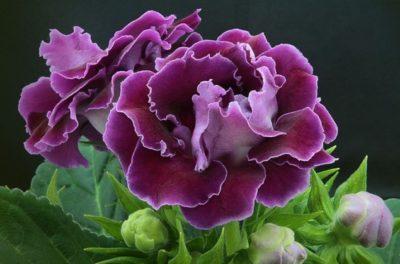

It is during flowering that gloxinia requires frequent and abundant watering. It is necessary to water as soon as the surface of the soil dries out. It is better to do this with the pallet method, because this way the gloxinia will take only the right amount. In addition, you cannot get on the plant itself. Otherwise, it can rot.
Another plus for watering through the pallet is the even distribution of moisture. In summer, when we water from above, moisture may never reach the very bottom, partially evaporating from the surface. Water should be only settled and soft, room temperature or plus 3 degrees.
Can the leaves be trimmed?
If you need a leaf for propagation, it is quite possible to cut it off. Also, it is not scary to cut off withered and damaged leaves. However, you should not seriously thin out the bush, from such stress, gloxinia can shed flowers and stop flowering.
The leaves are pruned when the first wave of flowering has ended. Not all are removed, but most, as well as all peduncles. After a while, stepchildren will appear, 2-3 of the strongest are left, the rest is cut out. Full pruning of leaves and stems is carried out in late autumn, before laying the tuber for storage.
Gray rot
The main signs of gray rot can be called the appearance of a gray fluffy bloom on gloxinia stems, leaf petioles and pedicels. In this case, the plant begins to rot very quickly. The reasons for the appearance of gray rot can be increased air humidity, too close arrangement of plants, lack of ventilation and caked substrate.
To prevent the occurrence of gray rot, provide gloxinia with moderate watering, and add sand, vermiculite or perlite to the substrate to ensure good ventilation of the roots. Ventilate the area where the gloxinia is growing often, but avoid drafts.
For the treatment of gray mold, fungicides can be used, the interval between treatments should be seven days.
Gloxinia leaves curl. Please tell me why, and how to deal with it?
Gloxinia do not like breeders. Dry and warm air causes a slowdown in growth, deformation of the leaves, the edges of the leaf blades bend down and dry out. With a lack of light, the color of the leaves turns pale, they elongate and become covered with small brown specks. Leaves can also curl up when damaged by a cyclamen mite or briobia mites. They are very fine, like dust. If there is whitish dust or plaque on the underside of the leaf, sprinkle gloxinia with insecticides 3-4 times (anti-mite, danadim, spark, tiovit, fury).
Perhaps this is a varietal trait, and also from dry air, the plant itself is not sprayed, but the air around it is humidified. I do not think this is due to pests, although it would not hurt to check. Good luck.
dry air! if the batteries are not closed, then because of them)
dry air and draft. Moisten the air around the plant, put it in a tray, pour expanded clay into it and pour water.
Powdery mildew
Powdery mildew is a fungal type of disease. It is characterized by the appearance on all parts of the plant of a spiderweb bloom of white color, which then turns into a mealy. The development of the disease is facilitated by excessive watering of the plant, a sharp temperature drop, as well as dampness in the room.
Downy mildew, or downy mildew, refers to fungal diseases. The development of this disease is facilitated by a sharp temperature drop. Infection can also occur when watering or spraying the plant with rainwater. Downy mildew appears in the form of shapeless spots appearing on the leaves.
If such signs are found, it is necessary to remove all damaged leaves from gloxinia, and then treat the plant with one of such drugs as Abiga-peak, Bravo, Optimo, Previkur, or other similar drugs.
Gloxinia leaves curl
Moderator: Lucina
Gloxinia leaves curl
Message anuti »08 Jun 2009, 22:32
Gloxinia leaves curl
I am writing here for the first time just like, for the time being, and growing the first gloxinia in my life. My gloxinia is tigrin blue. When she was a baby, she had beautiful rounded leaves without any flaws.When she was a month old, I had to leave and leave the care to a friend. I returned a month later and found that the leaves were terribly elongated, curled and slightly darkened at the edges. It stands on the sunny side, but there hasn't been a particularly bright sun this year. Of the shortcomings of the room, dryness of the air is possible, since a double-glazed window, European-quality repair and other nasty things, and the room, most likely, was practically not ventilated until I was away. Now I'm trying to humidify the air around her, I don't know what else to do. What is this in general, how to cope, and I really hope that it is not fatal for my gloxinia. I really hope for help! By the way, in the photo, for some reason, it turned out with some kind of brownish tint and spotty, in fact, the leaves are green, only the tips dry and darken
Thrips
Thrips are the most popular type of pest attacking gloxinia. These insects feed on the sap of the plant, which leads to its death. The main features of thrips are light dots, streaks and spots on gloxinia leaves. If you find these symptoms, immediately isolate the gloxinia pot from other indoor plants and treat it with one of the insecticidal preparations. For these purposes, you can use "Intavir", "Aktara", "Aktellik", "Fitoverm" or "Karate".
For the complete destruction of thrips, it is recommended to carry out three treatments of the plant, the interval between which should be seven days.
Proper care of gloxinia and keeping this plant in optimal conditions will help you avoid the appearance of any diseases and pests.
What it is?
A small stocky bush with velvety elongated leaves blooms of amazing beauty flowers. The colors are monochromatic or two-colored, with a wide edging along the edge of the petal, or with a contrasting openwork ornament. Flowers come in a wide variety of shades from white to almost black. The flower shape of an indoor flower resembles a bell, directed, with a bent edge of the petal. According to the structure of the rhizome, gloxinia belongs to tuberous plants.
Gloxinia, or in other words synningia - American by birth. In our country, it grows only at home, or in greenhouses. Belongs to the hersenium family.
What to do for prevention?
At the end of autumn, the plant stops developing and goes into a dormant state. At this time, watering is reduced, after which it is completely stopped. The entire aerial part of the gloxinia is cut off. Gloxinia care varies:
- the pot is removed to a cold room, where the temperature is at the level of 8 ... 10 ° C; the soil is occasionally moistened to prevent the tuber from drying out.
In this state, the flower is left until new shoots appear, after which they return to normal mode.
You can store the tubers without soil, they are pulled out and wrapped in paper. Storage temperature 5 ... 8 ° С.
IMPORTANT! Abundant watering during the dormant period leads to rotting of the tuber and the appearance of mold.
Florists often complain that the tubers cannot stand the winter and disappear, although all conditions have been met. This happens for several reasons:
- the tuber is too young; the presence of pests in the soil; infection or other medical conditions.
Young tubers of the first year of life are not sent into hibernation, they simply will not wake up in the spring. For the dormant period, gloxinia leave from the second year of cultivation.
In addition, only completely healthy tubers are sent for the winter. To do this, they are etched with phytosporin or other drugs. The soil is well disinfected.
If the tuber has not sprouted in the spring, then dig it up and cut it. The cut should be pink or yellow. In this case, the plant can still be saved.
Dry the cut site, treat with brilliant green, fungicides or any antiseptic, and then plant it in a loose substrate.
To stimulate root formation, you can water with Kornevin's solution.
May your gloxinia delight you all year round!


In order to prevent various leaf lesions in gloxinia, it is always necessary to carry out prophylaxis.
- Firstly, irrigation should be carried out on time when the plant itself needs it. In this case, there will be no overdrying and soil flooding.
- Secondly, do not place the plant where the bright rays of the sun fall on it.
- Thirdly, before planting gloxinia tubers in the ground, they should be pre-processed.
- And, fourthly, it is necessary to monitor the humidity in the room where the flower is located.
Tags: gloxinia, do, sheet, dry
About
«Previous post
Flowering process
Most indoor flowers bloom in the summer, there are varieties blooming in the fall, and some are able to remain beautiful all year round. In order to understand whether there is a problem at all, let's figure out what time and how long the gloxinia blooms.
When?
Under ideal conditions, gloxinia can bloom as early as March, but most often at this time, buds are still forming. Flowering continues until September-October.
How many?
Gloxinia blooms in 2 stages for about 3 months each. That is, the first flowering takes place from March to June, the second from July to October. Between flowering, the plant is pruned, and it again grows flower stalks and forms buds.
When will this happen to a leaf plant?


One of the propagation methods is the rooting of a leaf or its fragment. In order for a young plant to give flowers, it first needs to grow a tuber.
Therefore, if the leaf was rooted in the spring, then only by autumn can it bloom. There won't be many flowers, and besides, they won't last long. However, if you leave the tuber in a pot for the winter, then until next year it will grow in mass, which will provide the plant with strength for full flowering.
Gloxinia's leaves began to wither
If a Gloxinia's leaves began to wither in the fall, this means that gloxinia is preparing for wintering. Reduce watering to a minimum. Wait for the gloxinia to completely wither, cut off the upper part of the shoots, leave only a small stump and send the gloxinia tuber for the winter. It can be in the same pot, or in a plastic bag, as described in problem 1.
If the leaves of gloxinia began to wither during the growing season, then, most likely, problems with the tuber. From too much waterlogging, he rotted. Dig up urgently, cut off the affected leaves, treat the tuber with fungicides and plant in fresh soil.
Gloxinia shoots are strongly elongated
Gloxinia shoots are strongly stretched after wintering, when the room is too warm and insufficient lighting. Add lighting, periodic spraying of air, wet cleaning will help to reduce the temperature in the room. Strong stretching of the shoots can also occur with insufficient lighting, plus overfeeding with nitrogen fertilizers. Add light, do not feed with nitrogen fertilizers.
Gloxinia can be pulled out due to the varietal peculiarity, some gloxinia varieties are prone to pulling shoots. It is advisable to cut off the elongated shoot. The tuber will give a new shoot. The pruned shoot can be rooted, and it will also have time to bloom. If the elongated shoot is left, then it is likely to fall and take root. He will receive food from his newly formed roots, and in addition, draw food from the tuber. A new shoot may grow on the tuber, but it will be weak, it will not bloom, and the tuber will become weakened and may not overwinter.
Photo
Below you can see photos of common diseases and problems of gloxinia.
Gloxinia did not wake up after wintering
Storage place for gloxinia tubers should be cool and dark. If a gloxinia tuber adult and healthy, then as soon as it is put into the light and watering little by little, shoots begin to grow on it. Sometimes gloxinia wakes up by itself, and when you take it out into the light, it already has an escape. However, in practice, it does not always work out the way it should be.
Gloxinia does not wake up on time due to the fact that the rest period was too short, less than 4 months. It is quite possible that the wintering was too dry and the tuber was dry. But in any case, gloxinia wakes up by itself. It just takes patience.
In order not to encounter overdrying of the tuber, pots with gloxinia in winter sometimes need to be lightly watered or sprayed with water. Or you can put gloxinia tubers in plastic bags, pouring some soil or wet moss there. Close the bags or tie tightly. The bag will retain constant humidity, and due to the fact that the bag is transparent, you will have the opportunity to observe the gloxinia tubers in winter. At the first appearance of leaves, you can immediately plant gloxinia in a pot.
If a gloxinia did not wake up after wintering, it means that too young gloxinia was sent for the winter, which did not have time to form a tuber, or the tuber rotted.
If a gloxinia tuber was purchased in a store and after last year's bloom did not wake up from hibernation, it is possible that the tuber was sold of very low quality. Many growers complain about this particular problem. Outwardly, the tubers look quite well, but in reality it may turn out that they are already old, or infected with some kind of infection or pests. The strength of such tubers is only enough to bloom for one season.
Dig up the tuber, examine it: if it is severely wrinkled, then most likely it is gone. Break or cut it: the tuber on the cut should be slightly yellowish or pinkish. If so, then dry the sections, sprinkle with crushed charcoal, you can treat it with ordinary brilliant green or fucorcin (raspberry liquid, a strong antiseptic, has an antifungal effect, sold in pharmacies). You can treat the tuber with epin or zircon to increase the vitality of the tuber, to stimulate it to form shoots.
If the gloxinia tuber is brown on the cut, then most likely it is gone. If only one edge is brown, cut off all the rot, process the tuber as described above and plant in new soil.
If you want the purchased tubers to be able to endure wintering without any problems, then immediately after purchasing gloxinia tubers at home, process all planting material in a solution of potassium permanganate or phytosporin. This treatment aims to keep the gloxinia tubers from rotting.
The next step is the treatment of gloxinia tubers with actellik or phytoverm. These preparations will help get rid of thrips, spider mites and other pests of indoor plants.
If you purchased gloxinia in a pot, change the soil and process the tuber. The land sold in pots with plants is very poor.
Perhaps the tuber is already old, and just died. Gloxinia live for three to four years. If you highly value this particular variety of gloxinia, try to root the stalk or leaf in advance.
Pests and how to eliminate them
Pests inflict no less damage to plants in comparison with various diseases. Consider representatives of a similar fauna.
Spider mite
These pests appear due to insufficient humidity and dry air. Inhabiting one flower, they form a colony of about 100 individuals. They feed on plant sap, which is why light spots form on the leaves. Over time, they brighten and dry out.
On a note. Prevention of the appearance of a spider mite is reduced to a timely inspection of the plant.
Increase the humidity in the room where the flower is located. To combat the pest, the following measures are provided:
- Plant treatment with Fitoverm, Intovir preparations.
- Soil treatment with drugs that destroy the shell of the larvae - Aldikabr, Temik.
- To increase humidity, spray the plant and place it in the greenhouse.
Repeat such events after 10 days to eliminate stronger individuals. Cyclamen mite These small pests infest the lower part of the leaves.When damaged, the plant stops growing, and all its parts are deformed. At the edges, the leaf is curled down, and the stem is twisted. The buds wither and crumble, and the blossoming ones take an irregular shape.
The upper part of the shoots dries up, acquires a brown color. When there are multiple individuals, their colonies look like an accumulation of dust. To combat cyclamen ticks:
- Plant treatment with Fitoverm, Intovir preparations.
- Soil treatment with drugs that destroy the shell of the larvae - Aldicabr, Temik
Thrips


Thrips differ from other pests in their elongated body. Some individuals inhabit plant buds and live there all their lives, others prefer leaves. They feed on juice or nectar. In the presence of thrips, light spots form on the leaves of the flowers - stripes or strokes. They merge over time.
This leads to wilting of flowers and leaves. They dry up and fall off. Treatment is reduced to the following activities:
- Inspection of the flower. If a colony is found on any one plant, then remove it from the rest.
- Disinfect the location of the flower.
- All plants that were nearby should be treated with the following preparations:
- Fitoverm;
Akletik;
- Vermitic;
- Intavir.
Dilute them according to the instructions. After 10 days, repeat the treatment.
Shield
You can recognize the scale insect by the presence of sticky honeydew on the leaves. The pest spreads throughout the plant, affecting the stem, leaves and buds. He feeds on the juice of the culture, depriving it of trace elements. The leaves turn yellow, dry up, the growth of young shoots stops.
Attention! If you do not start treatment in time, then gloxinia will die.
Treatment consists of the following activities:
- Cleaning the plant from insects. Take a cotton pad and moisten it in a mash solution (1 liter of water and 20 g of soap). Treat all parts of the plant with a solution, removing the scale insects.
- Spray the flower with an insecticide - Bankol or Aktar. Cover with foil for 1 hour. For maximum results, repeat the treatment after 3-4 days.
- Quarantine infected plants, and wash the site of infection thoroughly with soapy water.
Whitefly
This insect is white in color, so it is easy to spot it. Growing individuals are especially dangerous. Pests feed on the sap of leaves and stems.
Adults leave their waste products on the leaves. This creates unfavorable conditions for photosynthesis. The leaves begin to rot, the stem changes, the buds are not tied.


Pests can be introduced through the soil, other plants, airflow from other ailing flowers. If the infection has occurred, then the following chemicals are used for pest control:
- Vertimek KE;
- Actellik KE;
- Admiral;
- Kinmix;
- Oberon.
They act on the intestines of the parasite, causing its death.
Mealybug
This pest leaves a sticky layer on the leaves. Because of this, they turn yellow and fall off. The growth of shoots stops. Mealybug is a parasite that looks like aphids, only he has a white body. Insects feed on sap of leaves and flowers. Individuals are quite fertile.
Adult parasites inhabit not only the leaves, but also the roots and flower capacities.
Reference. Mealybugs love dry and warm places, so low humidity in the room remains the main reason for their appearance.
Treatment includes the following activities:
- Wipe the affected parts with a cotton swab dipped in an alcohol solution and wait 30 minutes, it will be easier to remove the pests.
- Perform treatment with the following preparations:
- Karbofos;
Tsvetofos;
- Intavir;
- Decis;
- Phosbecid;
- Actellic.
To help the insecticide adhere better to the protective shells of the insects, add 20 ml of dishwashing liquid.
Fungal diseases and methods of their treatment
Below we will talk about the main fungal diseases affecting pelargonium, as well as what and how can be done for treatment.
Late blight
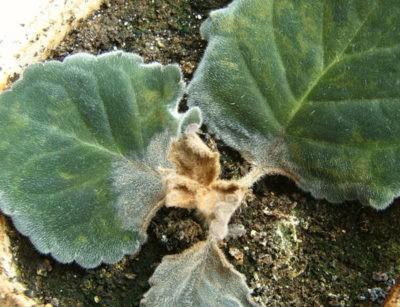

This is the most dangerous disease, since it cannot be cured. Late blight develops due to high humidity and temperature jumps of 9-20 degrees. For late blight, the following symptoms are characteristic:
- general wilting of the plant;
- the formation of brown spots on the leaves;
- white bloom on the inside of the sheet.
The development of infection is ubiquitous and spreads rapidly. The affected bush cannot be cured; it is removed along with the ground. For prevention, spraying with such drugs is carried out: Kuprozan and Teneb (40 g per 10 liters of water).
Powdery mildew
Attention! This disease is formed against a background of high humidity and temperature changes.
It is characterized by the formation of a whitish spider web. Infection can occur through soil or through inventory. Remove the affected plant elements, and treat the flower itself with fungicides:
- Bayleton.
- But.
- Quadris.
- Rajok.
- Speed
- Tilt.
Downy mildew
it a fungal disease affects the upper part of the plant. Sick leaves wrinkle, begin to curl into a tube (you can read about other diseases of gloxinia leaves here). When the leaf petiole is damaged, it dries up and disappears. Vague spots are formed on the outer part of the leaves. They can be of different colors:
- yellow;
- reddish brown;
- purple.
The development of downy mildew is influenced by the following reasons:
- low air temperature at night;
- heavy acidic soil;
- high humidity.


There are several ways to treat a flower.:
- Treatment with preparations with a copper compound:
- Thanos;
- Topaz;
- Vectra.
- With the beginning of fruit formation, spray the plants with Gamair (with an interval of 15 days).
- Processing with iodine milk. Combine 1 liter of non-fat milk with 9-10 liters of water, add 10-14 drops of 5% iodine.
- Ash infusion. Pour 200 g of ash with 3 liters of boiling water. Bring the volume of water to 10 liters, filter and process the plants.
Anthracnose
Reference. The disease is characterized by the formation of small brown spots. First, they infect the leaves, and then move to the stems and buds.
The disease is characterized by rapid spread, so remove the affected plant.
For prevention, treat the flower with the following drugs:
- copper oxychloride;
- Cuproxat;
- Oxyhom.
Ascochitosis
The disease is accompanied by brown or red spots on the leaves, and along the edge they have a brown edging. The reason for the appearance is the increased humidity in the room. Ascochitis is a dangerous disease... All affected leaves must be removed and burned.
To save the plant, treat it with copper sulfate or drugs such as Vectra, Adiga-peak. After 7-10 days, repeat the treatment.
Septoriasis
Fungal disease occurs against a background of high humidity, insufficient lighting and prolonged contact with water. Stains form on the leaves that look like rust. The stem, leaves and buds wither and dry quickly. Treatment is based on the use of fungicides: Maneb, Benomil.
Phylostictosis
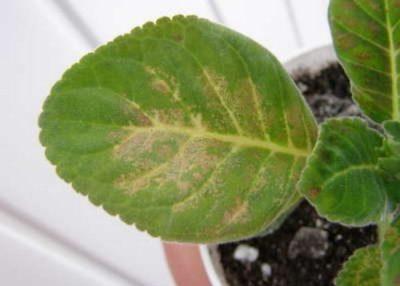

The disease develops due to high humidity. Dark rounded spots form on the leaves, brown in the middle.
As the disease progresses, tears are added to the spots. When the first signs are found, you need to dry the plant.
Then carry out the treatment with such drugs:
- Bordeaux liquid;
- Oxychloride;
- Copper sulfate.
Fusarium
It occurs due to improper irrigation and contaminated soil. The leaves of the plant wither and curl, acquire a brown color. Cracks and dark stripes are visible on the shoots.
Treatment consists of the following steps:
- Replacement of soil.
- Rinse tubers and roots in a weak solution of potassium permanganate (5 g of potassium permanganate per 1 liter of water).
- Transplant the flower into fresh substrate. It should be light and nutritious (read how to correctly transplant a flower here)
- Treat with fungicide.
Gray rot
Reference. Occurs with insufficient soil ventilation and high humidity.
Leaves and stems are affected by a gray bloom. Treatment includes the following actions:
- Reduce indoor humidity.
- Add a little sand or vermiculite to the soil. This will provide good ventilation to the roots.
- Reduce watering.
- Remove the leaves affected by rot.
- Treat with fungicides.
Growing gloxinia
Seed propagation and planting gloxinia
Incarvillea is propagated mainly by seeds, and propagation by cuttings is also found. Seeds are sown in the ground at the end of May, seedlings appear rare and uncooperative, quite late - by July. The emerged seedlings must be fed and watered with extreme care. If everything is done correctly, then next summer this oriental beauty can be expected to bloom.
reproduction of gloxinia
The disadvantage of this method is a decrease in the winter hardiness of the plant. If the seedlings of garden gloxinia are not fertilized, then the first flowering can occur only in 3-4 years.
Gardeners of the middle lane growing Incarvillea will have to regularly collect seeds, since under such conditions it lives only 3 years. This is due to freezing of the caudex top (an organ of stem origin that performs a storage function), since the formation of buds below the frozen part is almost impossible. Spring flooding, which damages plant roots, is also dangerous for garden gloxinia.
Site selection, soil and fertilization
The site for planting Incarvillea should be well lit, light partial shade is allowed. She loves the soil light and loose, well enriched with humus. Since stagnant moisture is harmful, you should take care of drainage. It can consist of fine expanded clay, crushed stone, brick chips.
breeding gloxinia
The plant easily tolerates drought, does not require frequent watering. Fertilizer is fed to adult plants 1-2 times a month. Both mineral and organic fertilizers are suitable for Incarvilles.
Transplant and autumn-spring care
Garden gloxinia should be transplanted every 5 years. Before sending the plant for the winter, the leaves are cut off (provided that they have not yet disappeared themselves) and covered with peat or sawdust. You can sprinkle the Incarvillea with mulch on top - the plant will bloom more abundantly and will better endure the winter. In spring, the shelter is harvested early to prevent damping of the tubers.
Cuttings
Cutting garden gloxinia should be correct: a leaf with a small part of the stem is separated from the mother plant. This is done in June-July, when the leaves are already sufficiently developed. They are placed in a greenhouse, after stimulating the formation of roots with special preparations. Roots are formed in 2.5-3 weeks, and the next year the Incarvillea will bloom.
Garden gloxinia is a very beautiful and delicate plant. Usually it is grown in separate group plantings. It can also be found in mixborders and occasionally in rabatkas. The most popular at present are such types of Incarvillea as Delavea, Olga, Chinese, dense and Myra.
Or maybe you want to create a long blooming flower bed.
If you find an error, please select a piece of text and press Ctrl + Enter.
Share with your friends on social networks!
Gloxinia flowering problems
It happens that gloxinia is already picking up the buds and almost opens its sepals, but the grower is disappointed: inside them there is just a barren flower that looks like a green pea. The reason for this phenomenon may be the wintering of gloxinia in an excessively cold place. Quite quickly, the peduncle of the underdeveloped bud completely darkens, then it should simply be cut off. You can spray the plant with growth stimulants and then make sure that the conditions for keeping it are quite comfortable.


If the ripe buds do not open completely, at first they become brown, then wither and completely fall off, then this may mean an alarming symptom: defeat by thrips or a spider mite, which is extremely dangerous for all domestic plants. It is necessary, without delay, to urgently treat gloxinia with any suitable insecticides.
In the event that no parasites were found on gloxinia, then the reason for insufficient flowering may be simpler: the plant has many buds and simply does not have enough strength, as well as not enough nutrition (and possibly lighting) to help its buds bloom.
In this case, it is necessary to feed the plant with suitable fertilizers, it is good if there is more phosphorus, as well as potassium, in it than nitrogen. It is possible, if necessary, to organize additional illumination of gloxinia, carefully adjust the temperature in the room, as well as humidity.
If the problem looks different, and gloxinia does not bloom at all and does not even pick up buds, then the reasons may be different, for example:
- If the soil lacks nitrogen or, on the contrary, it is too much.
- When the plant is dark.
- Gloxinia is cold indoors.
- There are few trace elements in the soil: phosphorus or potassium.
- In the fall, Gloxinia was not transplanted into new, more fertile fresh soil.
- Gloxinia grows in a pot that is too large, it gains green mass or tuber to the detriment of flowering.
- The plant did not rest or the rest was extremely short.
It is also possible that the "indoor pet" has simply grown old and therefore blooms much less often. In this case, you should think about updating it.
Begonia leaves curl
Moderator: Lady-flo
Begonia leaves curl
Message Len_ta »Jun 15, 2012 7:47 am
Begonia leaves curl
There is some trouble with my Bigonia Pikoti. It stands on the northeast window, until 11-30 12-00 direct sunlight, the temperature on the balcony is +30, the room is also not air-conditioned. The leaves are dried around the edges and curled. I have already put a pot of begonia in a tray with wet expanded clay. And today the largest bud has fallen off. You have to water every other day. What to do?
I put it in the room, covered it with a bag (mini-greenhouse), did it make it worse, or let it stand like this during the day or put it like that at night? At least I will raise the humidity, otherwise the air is very dry, we have no rain yet.
Gloxinia did not have time to form a tuber
If gloxinia is grown from seed and the seeds are planted late, then gloxinia may not have time to form a tuber... Gloxinia blooms only at six to seven months of age, when it has six to seven pairs of leaves. In this case, young gloxinia does not need to be sent for the winter, because you can completely lose gloxinia. In winter, try to maintain sufficient humidity and light so that the gloxinia does not stretch out.
To understand whether gloxinia will overwinter or not, count the leaves: if there are only four or five pairs of them, then such a small gloxinia cannot be sent for the winter. Gloxinia will bud when it has grown at least six pairs of leaves.
Also, the tuber does not have time to form when growing gloxinia from a leaf or cutting, especially if the cutting is too long and deeply buried.
Do not over-water. Due to waterlogging, gloxinia may also not have time to form a tuber.
Varieties of gloxinia
The genus Gloxinia has about 20 species and many varieties.
The most common gloxinia is speckled or perennial (Gloxinia perennis). A feature of this plant is the leaves, which are colored reddish from below. It blooms in autumn, flowers are axillary, while collected in several pieces on a long stem. Plant size - up to 70 cm.
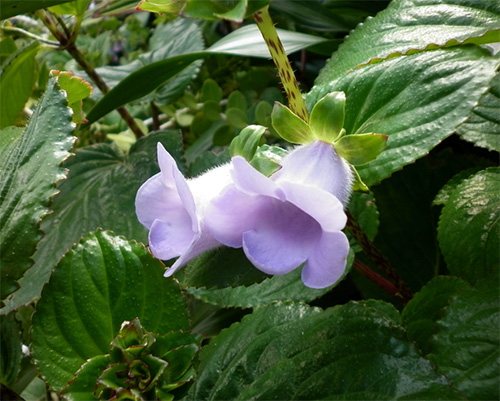

Gloxinia perennial
Another bright representative of the genus is Gloxinia regina (Gloxinia regina). Small plant (up to 10 cm), with wide dark leaves with silvery veins.It blooms in summer, the peduncle is high (up to 20 cm), the flowers are large purple, axillary. After flowering, the entire ground part dies off.
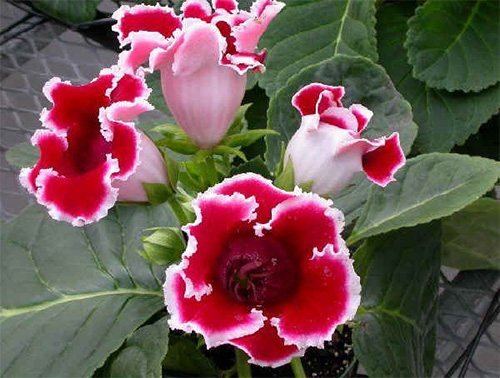

Gloxinia royal
Gloxinia fine (Sinningia speciosa) - looks like a royal, but has lighter leaves with light veins, and the flowers have a purple and violet hue.
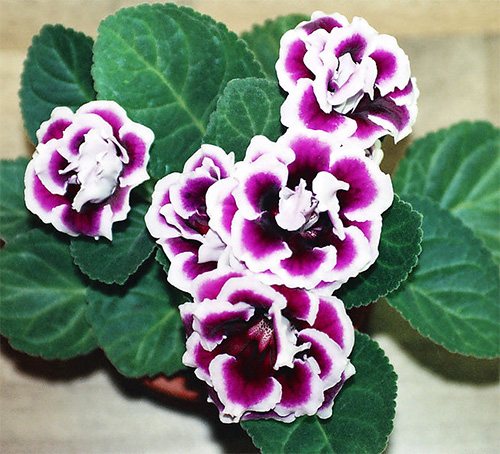

Gloxinia is beautiful
Sinningia tiny (Sinningia pusilla) is a low-growing plant (2.5 cm), with small oval velvet leaves (up to 1 cm). It blooms in summer, small flowers, located one by one on a short peduncle. The corolla of the flower has a short spur, from below it is white, from above it is purple.
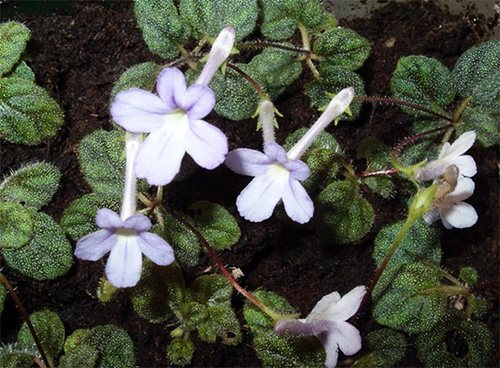

Sinningia tiny
Plant features
Gloxinia - a spectacular blooming indoor culture... Its peculiarity is lush flowering, and with careful care and favorable conditions, up to 15-20 buds can form on one flower. Gloxinia is a perennial herbaceous crop native to Brazil. Her dimensions are small: the height of an adult plant is 15-30 cm.
On a note. Gloxinia tubers live 3-4 years, but as they age, the flowers become less beautiful.
The leaves reach a length of 15-25 cm, oval, covered with a downy, with scalloped edges, rosette. Gloxinia blooms from April to August. On long peduncles, large, "gramophone" flowers are formed. Their diameter is 10 cm.The color can be pink, purple, white.
Pests
Thrips
The appearance of these harmful insects will be indicated by lines, dots and small light spots on the leaves. A grayish-brown hue and a silvery sheen will appear on the upper side, and brownish-brown spots on the lower side. The edges of the sheet are deformed. Thrips affect the entire aerial part, including buds, flowers and stems.
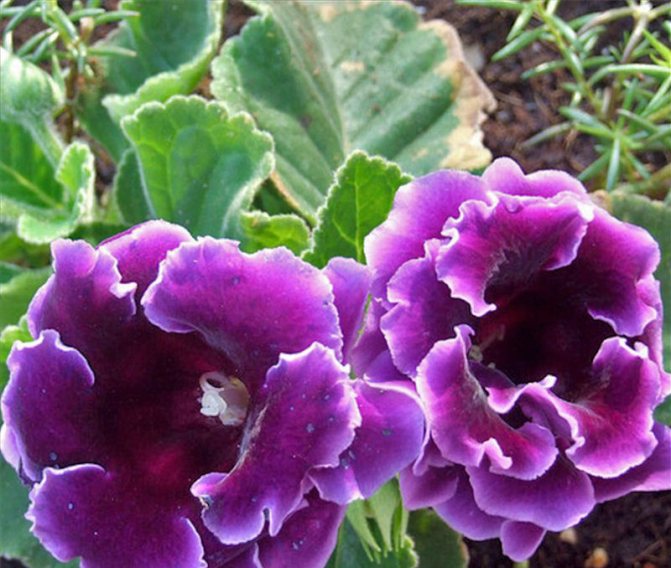

These pests are very persistent and hardy. To destroy them, use any of the insecticides: Aktara, Intavir, Aktelik, Karbofos, Fitoverm, Karate. Repeat the treatment three times a week. Before this, it is good to transplant the plant, replacing the ground and washing the tuber and roots in potassium permanganate.
Spider mite
Do not try to consider the insect itself - it is very small. Pay special attention to the underside of the leaves - this is where their place of residence is. The first signs of a spider mite are small white dots, which then develop into yellow-brown spots. If a white web has appeared, it means that the pests have already settled in large numbers. Their great danger is that they move quickly and can quickly move to other plants.
To get rid of spider mites, first remove the affected leaves, and then treat gloxinia with insecticide at least 3 times at intervals of 7 days. The use of acaricides is very effective.
What to do with other ailments?
Of other diseases, the plant is most often threatened by viroses and bacteriosis. Let's find out if we can somehow help in these cases.
Viroses
This disease develops against the background of viruses that penetrate through insect pests or with fungal spores. Spots, stripes and dashes form on the leaves and flowers. There is no cure for this disease. Remove the affected plant from the pot and burn.
Bacteriosis
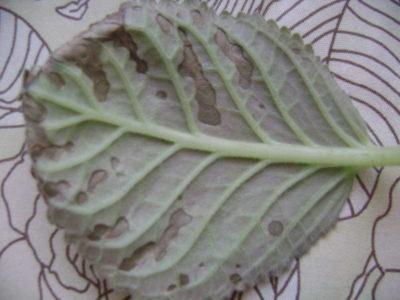

Bacteria can be brought in with untreated equipment, a pot, or non-disinfected soil. They defeat:
- tuber;
- buds;
- kidneys;
- leaves;
- stems.
Bacteriosis is not amenable to treatment. In case of infection, you need to get rid of the flower. Prevention includes the regular use of Zircon and Epin. These drugs stimulate the plant's immunity.
The presence of pests
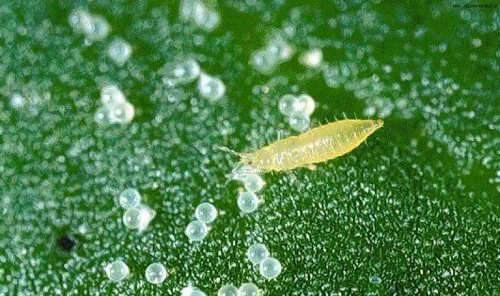

Gloxinia leaves curl up if thrips or ticks have settled on them. In this case, it is urgent to take action and treat the plant with insecticides (Aktara, Karbofos), otherwise it may die.
Video about proper care for gloxinia
Gloxinia is a beautifully flowering houseplant that looks decorative without flowers, only due to large, slightly pubescent leaves. But sometimes her leaves curl inward, why is this happening, how dangerous is it for the plant, and what needs to be done in order to stop this process?
Gloxinia leaves are a kind of indicator that immediately conveys its state and mood. It is a pity that the exact answer to the question of why they curl is not written on the leaves.
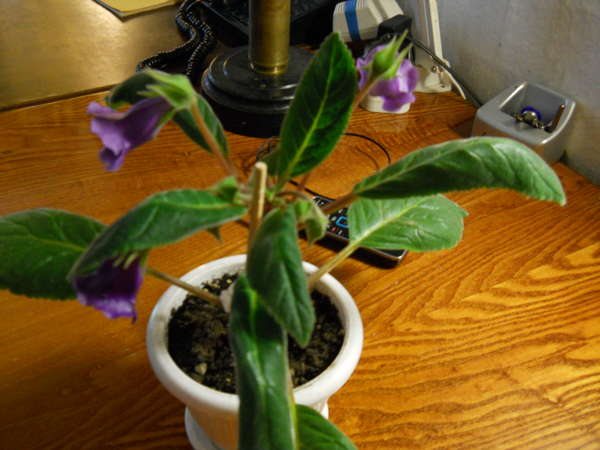

If the leaves of the gloxinia curl, it means that she does not like something about the care and conditions that you created for her. The flower will feel uncomfortable in a draft, or in a room with a low temperature, temperature drops also have a negative effect on it. The normal temperature for gloxinia ranges from 18 to 22 degrees, if these indicators are higher or lower, the leaves of the gloxinia will curl.
Gloxinia loves fresh air, so the room in which it grows must be ventilated. During airing, the flower is taken out so as not to expose it to stress from drafts.
Gloxinia leaves curl also due to low air humidity. This plant loves high humidity, therefore, in the hot summer period, or during the heating season, the air for it needs to be additionally humidified. This can be spraying the leaves of the plant, and increasing the humidity around the flower with the help of household humidifiers. The easiest way to increase the humidity of the air is to place a glass of water next to the flower.
If in summer a pot of gloxinia stands on the windowsill on the south side, you should not be surprised that its leaves curl. Direct rays of the sun in summer are especially harmful, in order to create more comfortable conditions for the plant, you should rearrange the pot deep into the room or simply shade the window with foil. Surprisingly, when there is a lack of light, gloxinia has the same leaf problems.
Useful video
In this video you will get acquainted with the intricacies of caring for Gloxinia:
Gloxinia, or, as it is also called by botanists, synningia, belongs to the small family Gesneriaceae.
Brazil is considered the birthplace of the plant, gloxinia is found in other countries of South America. This is a low-growing perennial herb with a tuberous rhizome, thick and velvety leaves, bell-shaped large flowers.
An interesting fact - the name of the plant comes from the name of the German physician and naturalist Benjamin Peter Gloxin.
Gloxinia has an interesting feature that many inexperienced growers do not know about: the fact is that gloxinia has a growth period and a dormant period. After abundant flowering in spring, summer and early autumn, the plant begins to dry out and wither. Seeing this, some people throw out gloxinia, thinking that the plant has died - and in vain! It's just that sinningia begins a dormant period that lasts from November to February. During this period, it is important to properly store the tuber and then next spring the gloxinia will bloom again, and will delight with its beauty.
The appearance of gloxinia - a thickened, shortened stem with opposite alternate leaves departs from the fleshy tuber. There are types of stemless plants.
Gloxinia leaves ovate with succulent cuttings, slightly serrated or wavy at the edges. For the winter, they all disappear.
Decorative large, slightly drooping flowers are located on a leafless short peduncle that emerges from the tuber. Flowers resemble bells in shape, there are double and simple, more often two-colored. Color variations are varied - purple, white, pink, and all shades of red. In some varieties, flowers from the inside are colored yellow. Flowering most often occurs in March and lasts until May, if the plant bloomed late, then this period lasts until summer.With a healthy tuber and proper care, up to 40 buds can appear during the growing season.
Gloxinia - leaf diseases and treatment, insecticide application, video
To the advantages of gloxinia, flower growers rightfully include not only large bell flowers, but also velvety foliage, which forms a lush aerial part of the plant.
If there is gloxinia in the home collection, leaf diseases and the treatment of their consequences can take a lot of time from the grower.
Fungal and bacterial infections, care errors and pests threaten the flower with serious damage and even death.
The most dangerous, rapidly developing and intractable diseases are caused by pathogenic fungi. Their spores are carried by the wind, falling on plants with water droplets or soil particles. You can bring in pathogens from a tool, loosening the soil or replanting a tuber.
More often than others, gloxinia are seduced by late blight fungi. Gloxinia leaf disease appears as brownish-brown spots on greenery, petioles, and stems. In dry air, the affected areas dry out quickly, the leaves, and then the entire aerial part, die. With high humidity, the tissues under the fungus rot, soften and also die off.
Treatment of late blight rarely gives positive results, and a viable fungus can remain active for several years. Therefore, it is important to prevent the onset of the disease by directing all efforts to prevention.
- All purchased tubers are treated with fungicides before planting.
- The soil for planting is heated in the oven.
- Gloxinia plants and the soil under them are sprayed with a solution of fingicide or phytosporin several times a year.
If gloxinia leaf disease, as in the photo, nevertheless made itself felt, the affected specimens are not only treated with an antifungal agent and cleaned of drying leaves. Gloxinia are quarantined, separated from healthy plants, and then sprayed with a systemic fungicide for prophylaxis. The treatment is repeated after a week.
These same measures are effective in treating gloxinia with leaf diseases caused by other fungi. Such diseases include:
- true and downy mildew;
- anthracnose;
- axochytosis;
- septoria and other infections.
Indoor plants are at greatest risk of infection if safety measures are not followed during planting, during summer outdoor maintenance, as well as careless care.
An alarming symptom that speaks of a fungal disease of gloxinia, as in the photo, is the formation of an unusual whitish plaque, brown, gray or reddish spots, foci of drying and dying tissue.
The bacteria that cause gloxinia disease can be spread to plants from the soil, from tools used during transplanting, or from a used pot. As a result of bacterial infection, both the aerial part and the tuber suffer, due to which the stems, leaves, buds are deformed, wet, and die off.
Diseases of a bacterial nature, especially if their pathogens have settled on the tubers, cannot be eradicated. Even deep pruning will not save the plant. Therefore, if a florist appreciates his collection, the immune protection of gloxinia is supported by Epin or another similar preparation, care is taken and safety precautions are taken when storing and transplanting tubers.
These same rules should be followed in order to protect flowers from viruses. Their appearance is marked by spotting of leaves and flowers, their deformation and gradual oppression. If a flower develops similar symptoms, its parts are not used for reproduction, but as soon as possible are replaced with a new, healthy specimen.
Often traces of the presence of pests are perceived as a disease of gloxinia, but the treatment of leaves in this case is of a completely different nature and, with due attention, will definitely return the plant to health.
The most dangerous enemies of gloxinia are thrips and microscopic mites.In the first case, small grayish-brown spots appear on the leaves. The edges of the leaf plates curl up and dry out. The shape of buds, stems and other parts of the plant is changing ugly.
The reasons for the appearance of pests and diseases of gloxinia lie in care errors. In dry air and with improper watering, spider mites and cyclamen appear on the leaves. Reproducing rapidly, these parasites capture and inhibit gloxinia and other indoor flowers.
Tick colonies look like a dusty bloom. And vital activity causes oppression of shoots, the plant refuses to bloom. To defeat dangerous pests, they use acaricides and insecticides, while they must establish regular care for green pets.

